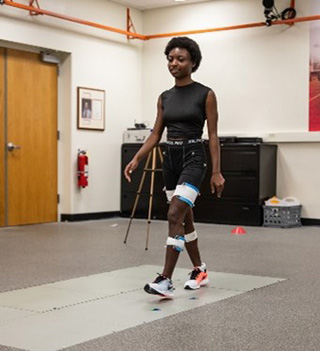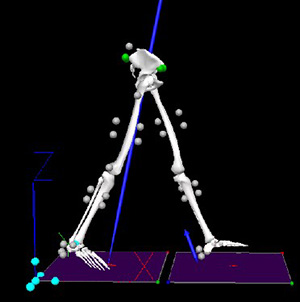Coordination and Optimization of Human Movement
 Biomechanical coordination describes the optimization strategy used to organize segments and joints to accomplish a motor task while kinematics describe the resultant motion based on the coordination strategy. Previously, we observed kinematic differences in gait at regular and fast set gait speeds between racial groups; observed differences were also affected by sex. From kinematic data alone, it is not possible to determine whether the groups utilized different optimization strategies to accomplish the same task (walking at set speeds), resulting in different joint kinematics, or if the groups utilized the same optimization strategy but had different resultant kinematics, for example, due to anthropometric differences. Evaluation of joint coordination and kinematic data together could clarify this point. This ongoing work aims to determine whether, in addition to previously identified kinematic differences, joint coordination patterns also differ between racial groups and by sex. More broadly, we are interested in how movement and coordination are differentially optimized leading to variations in resultant motion, along with the biomechanical and physiological consequences and advantages of such variations.
Biomechanical coordination describes the optimization strategy used to organize segments and joints to accomplish a motor task while kinematics describe the resultant motion based on the coordination strategy. Previously, we observed kinematic differences in gait at regular and fast set gait speeds between racial groups; observed differences were also affected by sex. From kinematic data alone, it is not possible to determine whether the groups utilized different optimization strategies to accomplish the same task (walking at set speeds), resulting in different joint kinematics, or if the groups utilized the same optimization strategy but had different resultant kinematics, for example, due to anthropometric differences. Evaluation of joint coordination and kinematic data together could clarify this point. This ongoing work aims to determine whether, in addition to previously identified kinematic differences, joint coordination patterns also differ between racial groups and by sex. More broadly, we are interested in how movement and coordination are differentially optimized leading to variations in resultant motion, along with the biomechanical and physiological consequences and advantages of such variations.
